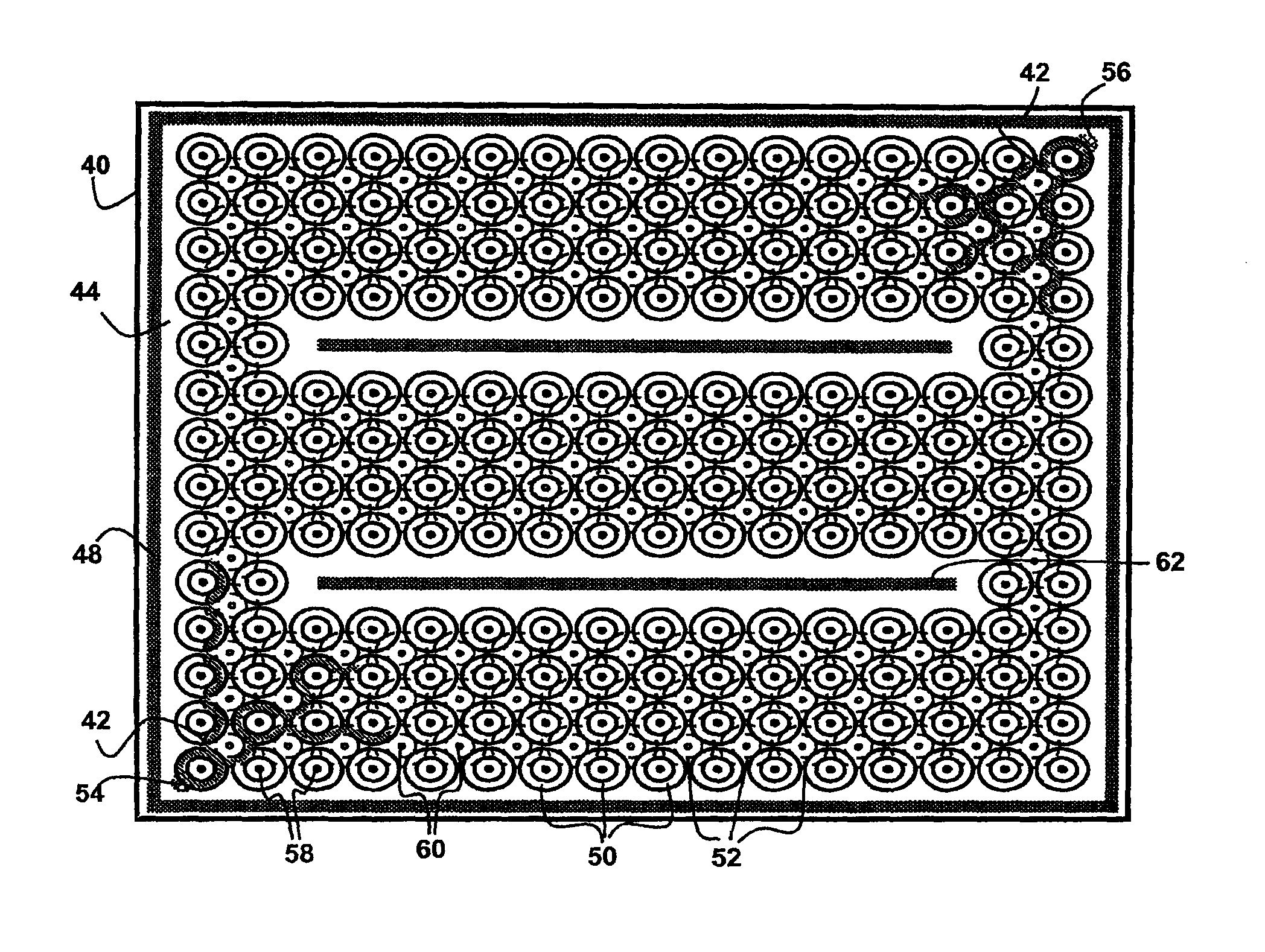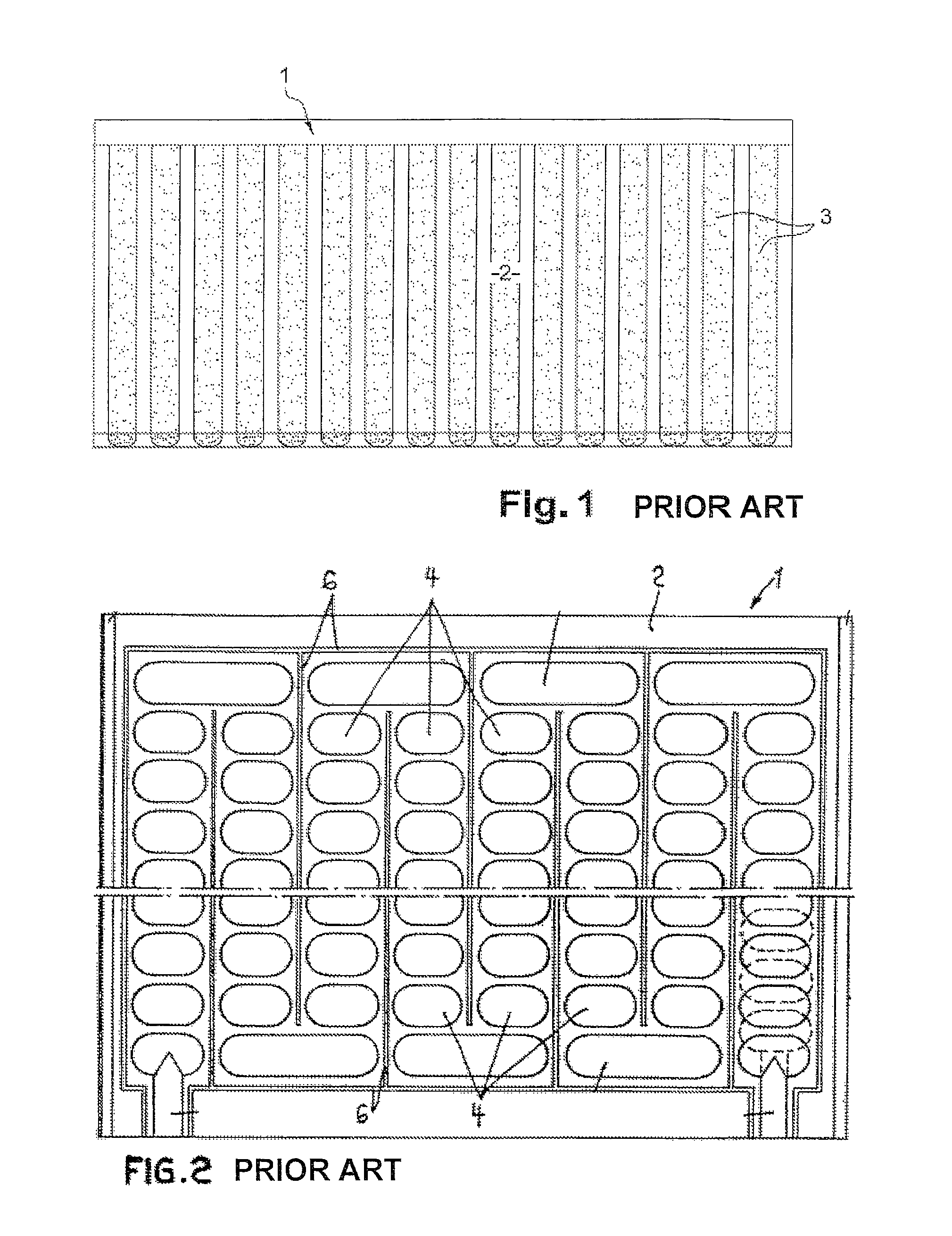Absorber for a thermal solar panel
a solar panel and absorption technology, applied in solar heat collectors, solar heat devices, solar heat devices, etc., can solve the problems of mechanical complexity and fragility of the absorption device, and less efficient path of heat-bearing fluid, so as to achieve optimal heat yield and reliably support the pressure of heat-bearing fluid
- Summary
- Abstract
- Description
- Claims
- Application Information
AI Technical Summary
Benefits of technology
Problems solved by technology
Method used
Image
Examples
Embodiment Construction
[0028]The invention will be described hereinbelow solely by way of example in relation to FIGS. 4 to 8. Reference is made initially to the FIG. 4 which illustrates a plan view of an absorber for a solar panel according to a preferred embodiment of the present invention. The absorber 40 for solar panel is provided to contain heat-bearing fluid 42. The absorber is mainly made by means of two metal plates superposed and fixed together tightly. In this figure, only the upper plate 44 is visible, the lower plate (46, FIG. 6a) being located underneath.
[0029]A continuous connection 48 obtained by ultrasonic welding or laser fusion continue of the two plates ensemble is advantageously provided for tight fixing on the periphery of the plates. This first solution proves the simplest and the fastest to carry out, at the same time ensuring proper peripheral tightness. An alternative solution, though less interesting due to being more complex to execute, consists of folding the edges of one of t...
PUM
 Login to View More
Login to View More Abstract
Description
Claims
Application Information
 Login to View More
Login to View More - R&D
- Intellectual Property
- Life Sciences
- Materials
- Tech Scout
- Unparalleled Data Quality
- Higher Quality Content
- 60% Fewer Hallucinations
Browse by: Latest US Patents, China's latest patents, Technical Efficacy Thesaurus, Application Domain, Technology Topic, Popular Technical Reports.
© 2025 PatSnap. All rights reserved.Legal|Privacy policy|Modern Slavery Act Transparency Statement|Sitemap|About US| Contact US: help@patsnap.com



